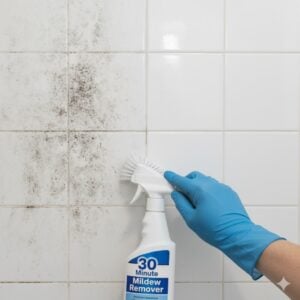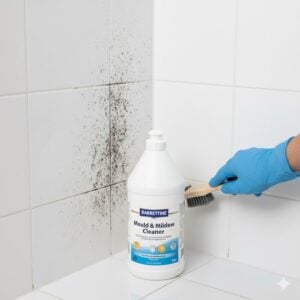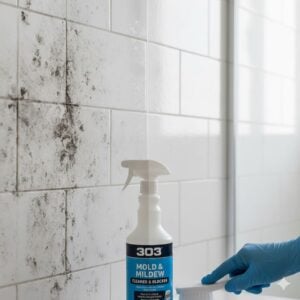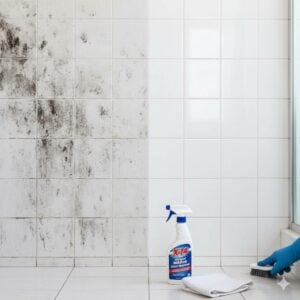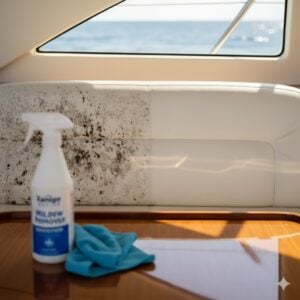Let’s be honest—if you’ve dealt with mold at home in Dubai or anywhere in the UAE, someone has probably told you, “Just use mold paint.” It sounds like a dream fix, right? A quick coat of paint and boom—the mold is gone. But does it really work like that?
We get this question all the time, and the truth is a little more complicated. Mold-resistant paint can be very useful, but only when used correctly. In this article, we explain what mold paint actually is, how it works, and whether it can really protect your home. If you want clean walls and fresh air without wasting money on the wrong solution, keep reading.
Table of Contents
Toggle1. Do Anti-Mold Paints Really Work?
Yes—but with some important limits. Anti-mold paints (also called mold-resistant or mold-killing paints) are designed to prevent mold spores from growing on surfaces like bathroom ceilings, kitchen walls, and poorly ventilated corners. They often contain antimicrobial agents that stop new spores from taking hold. But here’s the catch: they don’t kill mold that’s already there.
In fact, painting over mold without treating the root cause is one of the most common mistakes we see in UAE homes. The mold might look hidden for a few weeks, but it continues growing behind the paint, eating into the wall or ceiling, and eventually coming back—sometimes worse than before.
So do anti-mold paints work? Yes, they can help prevent mold after proper cleaning and drying. But no, they are not a replacement for professional mold remediation. Think of them as a shield—not a cure.
2. How Does Mold Paint Work, and What Is It Made Of?
Anti-mold paints work by making it harder for mold to grow on painted surfaces. Most of these paints include special additives—like biocides or fungicides—that attack the kinds of microbes that cause mold. Some also contain moisture-resistant ingredients that help keep walls dry.
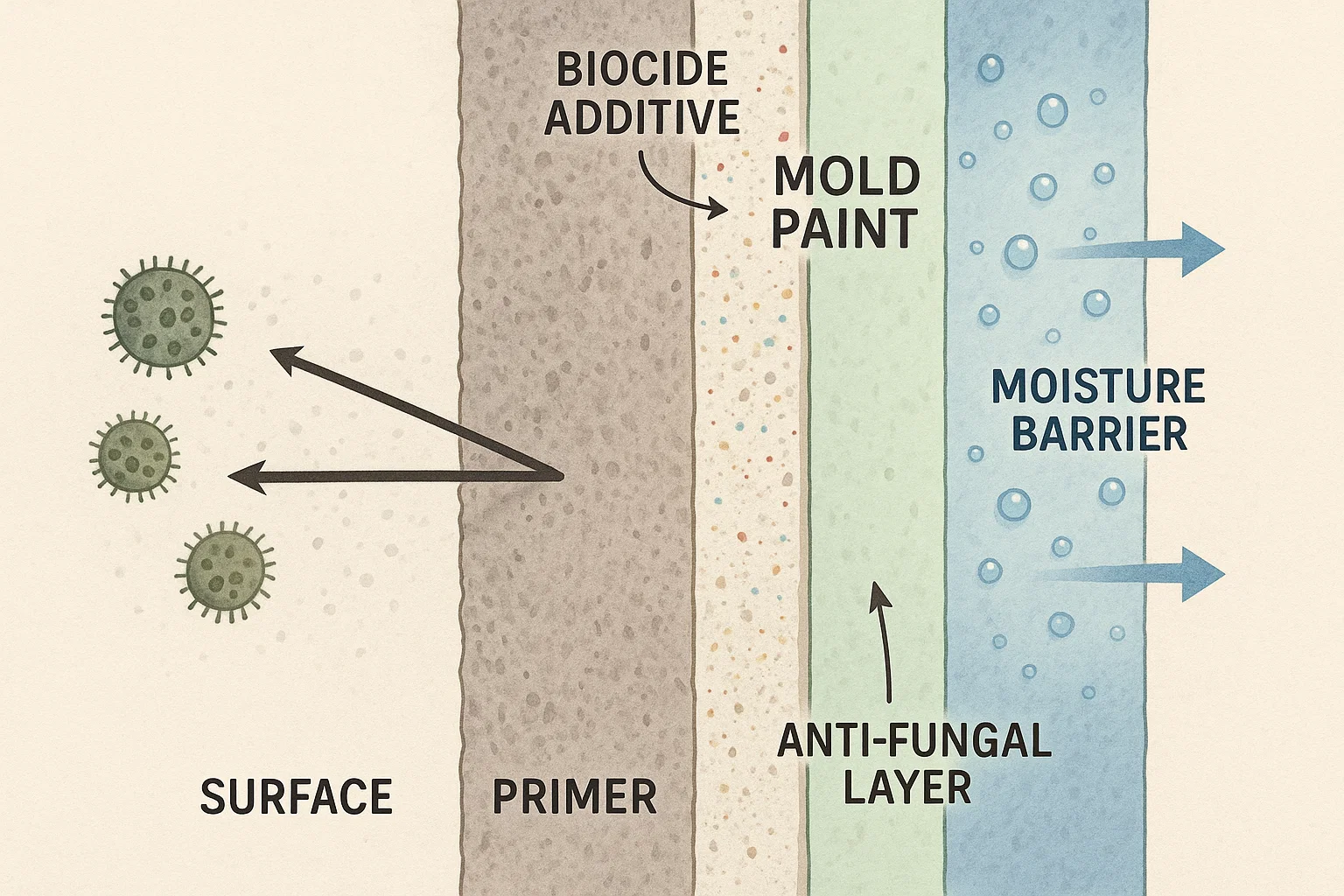
Here’s what’s inside a typical mold-resistant paint:
- Biocide additive: Stops mold spores from developing on the surface.
- Anti-fungal layer: Prevents fungi and mildew from growing in damp environments.
- Moisture barrier: Keeps water from soaking into the wall, which would otherwise create a breeding ground for mold.
Some paints are designed specifically for bathrooms and kitchens, while others are meant for general use. High-quality brands like Dulux or Jotun often have built-in protection that lasts for several years—especially when applied on clean, dry walls with a primer underneath.
But again, these paints are only as good as the surface they go on. If you apply them over active mold or onto a wall that hasn’t dried out, the protection won’t last—and the mold will return.
3. When Should You Use Mold Paint—and When Not To
Mold-resistant paint is useful—but only in the right context. If you’re painting a bathroom wall that has no active mold but tends to get humid, anti-mold paint is a smart choice. If you’ve recently removed mold professionally and want to prevent it from coming back, again, mold paint is perfect for that.
But if you’re dealing with visible mold patches, peeling paint, or a musty smell coming from the wall—stop. That’s not a job for paint. Mold paint does not remove or neutralize existing mold. In fact, painting over active mold can trap moisture and accelerate the problem behind the surface.
Here are good situations to use mold paint:
- After professional mold remediation to prevent recurrence
- In high-humidity areas like kitchens, bathrooms, and laundry rooms
- On well-ventilated walls that have no visible damage but are prone to moisture
And when not to use it:
- Over mold you haven’t removed
- On damp or water-damaged walls
- As a substitute for professional inspection in serious cases
In short, use mold paint as the last step in a prevention strategy—not the first step in a cleanup plan.
4. Best Mold-Resistant Paints Available in the UAE
The UAE market has some excellent anti-mold paint options, both from global brands and local suppliers. Here are a few trusted choices:
- Jotun Majestic True Beauty with Fungicidal Properties: Ideal for bathrooms and kitchens. Smooth finish, trusted in UAE homes.
- Dulux EasyCare with MouldTec: Designed for humid environments and resistant to everyday wear and tear.
- Benjamin Moore Aura Bath & Spa: High-end product with strong mildew resistance, best for luxury villas and interiors with poor airflow.
These paints all have anti-fungal agents and are available in different finishes (matte, satin, eggshell). Whichever you choose, don’t skip the primer—especially in older homes or apartments with previous mold issues. Moisture-sealing primers are crucial for long-term results.
At Bio-On, we often apply mold-resistant paints as part of our post-remediation service—especially when clients want to protect high-risk walls in places like bathrooms, AC closets, or utility rooms.
5. Mold Paint vs. Mold Remediation—Which Do You Really Need?
This is the big question: should you just paint it, or do you need a professional mold treatment first?
The answer depends on what you’re seeing. If your wall is clean and dry but tends to grow mold over time, paint is a great preventative measure. But if there are dark spots, a musty smell, bubbling paint, or any signs of water damage—don’t skip remediation. Paint won’t fix the root issue.
We recommend starting with an inspection if you’re not sure. At Bio-On UAE, we provide full mold diagnostics, removal, and optional sealing with mold-resistant paint. That way, you’re treating the cause first, and preventing the return.
If you’d like advice or a quote, just click the contact button on the right-middle of this post. We’ll guide you clearly—no upselling, just what your space really needs to stay mold-free.
Conclusion
Mold paint is not a myth—but it’s also not magic. Used the right way, it can protect your home from future mold growth and keep your walls clean for years. Used the wrong way, it can hide a problem that only gets worse underneath.
Now that you understand how it works, we hope you feel confident in choosing the right steps. Whether you’re refreshing your kitchen or facing a bigger mold issue, we’re here to help. Just click the contact button on the right-middle of this post, and let’s get your home back to healthy.









